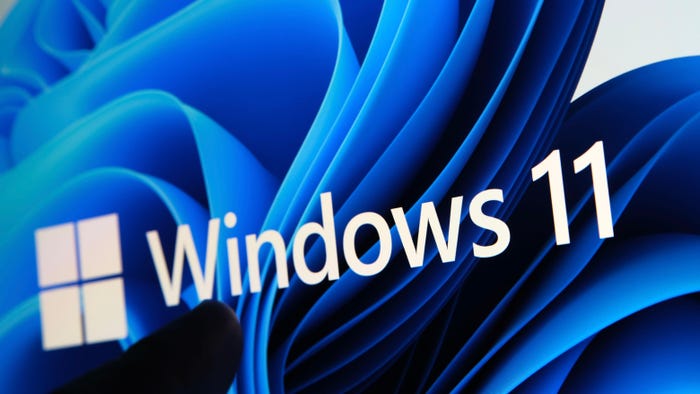ISACA Survey: 87% of Security Experts Say Mobile Payments Data Breaches Will GrowS
Yet 42% report using this payment method.
September 29, 2015

PRESS RELEASE
Rolling Meadows, IL, USA (24 September 2015)—A survey of more than 900 cybersecurity experts shows that an overwhelming majority (87%) expect to see an increase in mobile payment data breaches over the next 12 months, yet 42% of respondents have used this payment method in 2015. The 2015 Mobile Payment Security Study from global cybersecurity association ISACA suggests that people who use mobile payments are unlikely to be deterred by security concerns.
Other data from the survey show that cybersecurity professionals are willing to balance benefits with perceived security risks of mobile payments:
Only 23% believe that mobile payments are secure in keeping personal information safe.
Nearly half (47%) say mobile payments are not secure and 30% are unsure.
At 89%, cash was deemed the most secure payment method, but only 9% prefer to use it.
“Mobile payments represent the latest frontier for the ongoing choice we all make to balance security and privacy risk and convenience,” said John Pironti, CISA, CISM, CGEIT, CRISC, risk advisor with ISACA and president of IP Architects. “ISACA members, who are some of the most cyber-aware professionals in the world, are using mobile payments while simultaneously identifying and contemplating their potential security risks. This shows that fear of identity theft or a data breach is not slowing down adoption—and it shouldn’t—as long as risk is properly managed and effective and appropriate security features are in place.”
Reports say that contactless in-store payment will continue to grow. Overall, the global mobile payment transaction market, including solutions offered by Apple Pay, Google Wallet, PayPal and Venmo, will be worth an estimated US $2.8 trillion by 2020, according to Future Market Insights.
ISACA survey respondents ranked the major vulnerabilities associated with mobile payments:
Use of public WiFi (26%)
Lost or stolen devices (21%)
Phishing/shmishing (phishing attacks via text messages) (18%)
Weak passwords (13%)
User error (7%)
There are no security vulnerabilities (0.3%)
What Consumers Need to Know
According to those surveyed, currently the most effective way to make mobile payments more secure is using two ways to authenticate their identity (66%), followed by requiring a short-term authentication code (18%). Far less popular was an option that puts the onus on the consumer—installing phone-based security apps (9%).
“People using mobile payments need to educate themselves so they are making informed choices. You need to know your options, choose an acceptable level of risk, and put a value on your personal information,” said Christos Dimitriadis, Ph.D., CISA, CISM, CRISC, international president of ISACA and group director of information security for INTRALOT. “The best tactic is awareness. Embrace and educate about new services and technologies.”
Understand your level of risk: Ask yourself what level of personal information and financial loss is acceptable to balance the convenience of mobile payments.
Know your options: Understand the security options available to manage your risk to an acceptable level. Using a unique passcode should be mandatory, but also look into encryption, temporary codes that expire and using multiple ways to authenticate your identity.
Value your personal information: Be aware of what information you are sharing—e.g., name, birthday, national identification number, pet name, email, phone number. These pieces of information can be used by hackers to gain access to accounts. Only provide the least amount of information necessary for each transaction.
Security Governance for Retailers and Payment Providers
In the emerging mobile payment landscape, ISACA notes that there is no generally accepted understanding of which entity is responsible for keeping mobile payments secure—the consumer, the payment provider or the retailer. One approach is for businesses to use the COBIT governance framework to involve all key stakeholders in deciding on an acceptable balance of fraud rate vs. revenue. Based on that outcome, organizations should set policies and make sure that mobile payment systems adhere to them.
Members of the IT or information security group taking part in the discussion should also ensure they are keeping up to date with the latest cybersecurity developments and credentials. A joint 2015 ISACA/RSA study shows that nearly 70% of information security/information technology professionals require certification when looking for candidates to fill open security positions.
ISACA established Cybersecurity Nexus (CSX) to help organizations develop their cybersecurity workforce, and to help individuals advance their cyber careers. For information on CSX, including the CSX 2015 cybersecurity conference and the new CSX Practitioner certification, visit https://cybersecurity.isaca.org.
About ISACA
ISACA® (isaca.org) helps global professionals lead, adapt and assure trust in an evolving digital world by offering innovative and world-class knowledge, standards, networking, credentialing and career development. Established in 1969, ISACA is a global nonprofit association of 140,000 professionals in 180 countries. ISACA also offers the Cybersecurity Nexus™ (CSX), a holistic cybersecurity resource, and COBIT®, a business framework to govern enterprise technology.
Contact:
Kristen Kessinger, +1.847.660.5512, [email protected]
Joanne Duffer, +1.847.660.5564, [email protected]
You May Also Like
Catch the Threat Before it Catches you: Proactive Ransomware Defense
September 5, 2024How to Evaluate Hybrid-Cloud Network Policies and Enhance Security
September 18, 2024DORA and PCI DSS 4.0: Scale Your Mainframe Security Strategy Among Evolving Regulations
September 26, 2024Harnessing the Power of Automation to Boost Enterprise Cybersecurity
October 3, 2024
[Virtual Event] The Essential Guide to Cloud Management
October 17, 2024Black Hat Europe - December 9-12 - Learn More
December 10, 2024SecTor - Canada's IT Security Conference Oct 22-24 - Learn More
October 22, 2024

_Tero_Vesalainen_Alamy.jpg?width=700&auto=webp&quality=80&disable=upscale)
